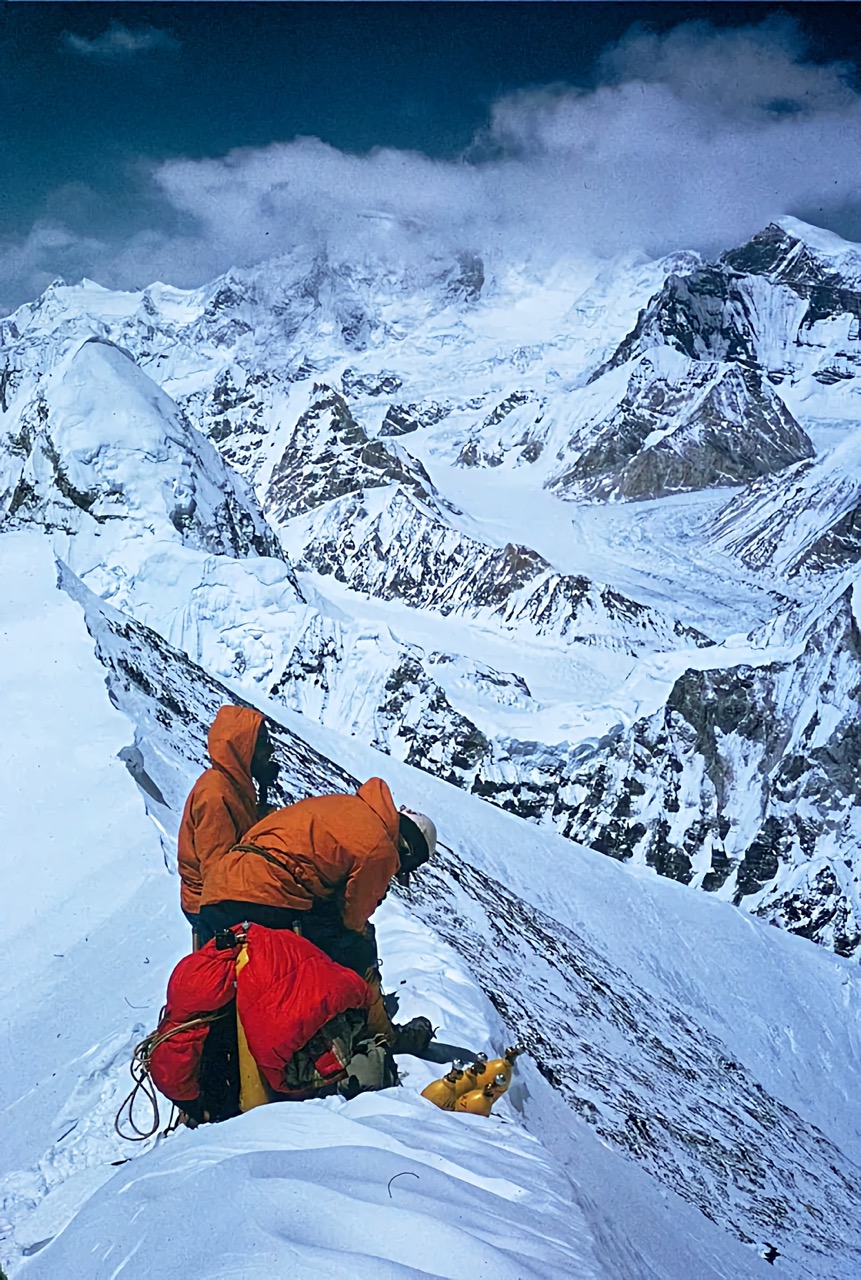Sixty years ago, Willi Unsoeld and Tom Hornbein, who passed away on Saturday at age 92 in his home in Estes Park, reached the summit of Everest via an audacious first ascent of the West Ridge. This ascent still stands as one of the all-time greats of mountaineering lore, not just for how close they came to death, but for how their ascent represented a rather visionary departure away from the “conquest”-obsessed expedition mountaineering tactics of nation states, toward an individual-centered approach to climbing that focused on style, and difficulty for difficulty’s sake.
At the time, Unsoeld and Hornbein’s radical ascent was overshadowed by the media coverage of Jim Whittaker’s ascent of Everest via the normal South Col route a few weeks earlier—an ascent that landed him the honorific of being the first American to reach the top of the world’s tallest mountain, and perhaps only the seventh or eighth person ever to climb Everest. Despite efforts by expedition crew and leaders to share the spotlight among all their fellow teammates for everyone’s remarkable efforts on Everest that year, the media couldn’t help itself but gravitate toward a preference for boosting the sexier headlines about Whittaker being the first American to summit Everest.
In terms of the sometimes odd, or perhaps even relatively insignificant, climbs that get attention in mainstream media these days, you might say that not much has changed, if you think about it. It’s also striking to consider how few climbers really do think differently and are willing to go against the grain, against the culture, against their peers, against even sanity itself, and take a risk on achieving their own creative vision.
It’s pretty inspiring to revisit the details of the West Ridge’s first ascent, including the fact that, after launching a last-ditch alpine-style push for the summit, Hornbein and Unsoeld basically committed to a summit-or-die pact with each other in which they needed to go up and over the top in order to get back safely. An open bivy in the Death Zone ensued, and toes were ultimately lost—but they survived and succeeded against all odds. The difficulty of their route is revealed in how few ascents it has received over the past 60 years—perhaps fewer than 10, despite big famous climbers with big famous trainers and all the modern conveniences of Everest today pre-spraying their intentions of repeating this route, only to get their asses kicked.
Beyond the harrowing and unreal details of Unsoeld and Hornbein’s climb, it’s what this route represents that makes it legend. Consider the fact that Hornbein might’ve joined Whittaker in getting to the top, but instead he and Unsoeld expressed this truly bizarre preference to do something totally different and with a far less certain outcome. You can imagine all the incentives that would’ve made going for an “established” route—there were only 2 other routes on Everest, and each had scarcely been climbed—seem more sensible, not to mention less burdensome to the expedition as a whole. The whole purpose of this expedition, after all, was to put an American on the top of Everest—a mission with geopolitical implications at the height of the Cold War. Also, on an individual level, this might’ve been Hornbein’s one and only shot at Everest—with all the uncertain outcomes, why wouldn’t he choose the path with the least amount uncertainty in order to maximize his once-in-a-lifetime chances of reaching the top?
But Hornbein and Unsoeld were just crazy or audacious enough to want to do something totally new, very hard, and with a high potential for failure. And they were just competent and just lucky enough to pull it off.
That mix of being crazy, competent, and lucky seems to be a secret sauce for doing great things. Too little competence or luck, of course, leads to disaster in climbing. Not being crazy enough means you’re inevitably follow in the footsteps of others. But if you’re willing to try to hit that sweet spot, to hit that right mix of being competent, lucky, and insane (in a good way), you may end up achieving something that people will still be talking about and finding inspiring 60 years later.
Here’s to the life of Tom Hornbein, an all-time great, and whose inspiration we need today as much as ever.




Well said as usual.
Truly unreal! Hornbein and Unsoelds willingness to bail on the more certain south col route for the rowdy west ridge is legendary! Thanks Andrew for helping to maintain its unforgettable place in climbing history!
I’ll never forget reading Ascent, Nanda Devi, and Whittaker’s lame autobiography. Ascent was the only worthy book of the three. Nanda Devi by Roskelley is the worst book I ever finished. I think about the West Ridge expedition all the time. You’re right, it sorta made no sense and all the sense in one. No one seems to be like those guys, Hornbein and Unsoeld. Or perhaps there are some like that who keep themselves hidden? Love this article.